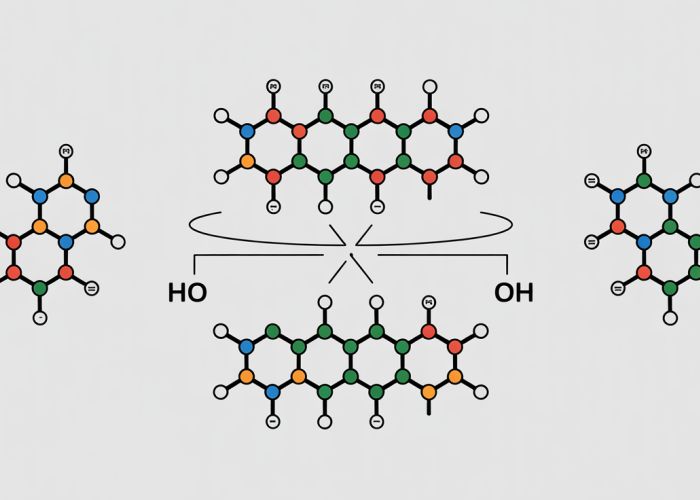The chiral center, a foundational concept in organic chemistry, directly influences a molecule’s ability to rotate plane-polarized light. Understanding this leads directly to grasping optically inactive meaning, a crucial aspect in pharmaceutical development. This property is especially important when working with compounds analyzed using polarimetry, a technique employed extensively by organizations such as the International Union of Pure and Applied Chemistry (IUPAC) to define standards in the field. Therefore, deciphering optically inactive meaning allows us to explore further into fields such as organic synthesis and how to work with certain molecules.

Unraveling the Scientific Secret of Optical Inactivity
The "optically inactive meaning" can be a complex concept for those unfamiliar with stereochemistry. This article aims to provide a comprehensive explanation of what optical inactivity signifies in the context of chemical compounds and their interaction with polarized light. We will break down the core principles and illustrate them with examples to facilitate understanding.
Defining Optical Activity and its Counterpart
Before diving into optical inactivity, it’s crucial to understand optical activity. Optical activity refers to the ability of a chiral molecule to rotate the plane of polarized light.
- Chirality: A key concept is chirality, meaning a molecule is non-superimposable on its mirror image, much like our left and right hands. These mirror image forms are called enantiomers.
- Plane-Polarized Light: Ordinary light vibrates in all directions. Plane-polarized light vibrates in only one direction.
If a substance rotates the plane of polarized light to the right (clockwise), it’s dextrorotatory and denoted by (+). If it rotates it to the left (counter-clockwise), it’s levorotatory and denoted by (-).
Optical inactivity, conversely, describes substances that do not rotate the plane of polarized light. The question then becomes: why would a substance not exhibit optical activity?
Reasons for Optical Inactivity
Understanding why a substance is optically inactive is central to understanding the "optically inactive meaning." There are two primary reasons:
-
Achiral Molecules:
- The most straightforward reason is that the molecule itself is achiral.
- Achiral molecules possess a plane of symmetry, a center of symmetry, or other symmetry elements that render them non-chiral.
- Examples include water (H₂O), carbon dioxide (CO₂), and methane (CH₄).
- Since they lack chirality, achiral molecules cannot interact with polarized light in a way that causes rotation.
-
Racemic Mixtures and Compensation:
- Even if a molecule is chiral, a sample of it may still be optically inactive. This usually occurs due to the presence of a racemic mixture.
- A racemic mixture is a 50:50 mixture of two enantiomers.
- Each enantiomer will rotate the plane of polarized light, but in opposite directions.
- Since they are present in equal amounts, the rotation caused by one enantiomer exactly cancels out the rotation caused by the other.
- This phenomenon is called external compensation.
Visualizing External Compensation:
Enantiomer Rotation Direction Rotation Magnitude Net Rotation (+) Form Clockwise +X degrees (-) Form Counter-Clockwise -X degrees Total N/A N/A 0 degrees
Other Contributing Factors to Optical Inactivity
While chirality and racemic mixtures are the main reasons, some other subtle factors can influence observed optical rotation:
- Concentration: If the concentration of the optically active substance is too low, the rotation might be so small that it is undetectable by the instrument.
- Path Length: Similar to concentration, if the path length (the distance the polarized light travels through the sample) is too short, the rotation might be negligible.
- Solvent Effects: The solvent in which the substance is dissolved can influence the observed rotation, though usually not to the point of total inactivity unless masking another reason. Some solvents interact with chiral molecules, affecting their configuration.
- Instrumental Error: In rare cases, instrumental errors or limitations might lead to an inaccurate measurement of zero rotation.
Practical Implications of Understanding Optical Inactivity
Understanding the "optically inactive meaning" has several practical applications, particularly in chemistry and pharmacology:
-
Stereochemical Analysis: Measuring optical activity, or lack thereof, helps determine the stereochemical composition of a sample. This is critical in synthesizing pure enantiomers.
-
Drug Development: Many drugs are chiral, and their different enantiomers can have vastly different effects. Sometimes, one enantiomer is therapeutic, while the other is inactive or even toxic. Therefore, knowing if a compound is optically active or inactive and in what ratio its enantiomers are present is vital.
-
Reaction Monitoring: Optical activity measurements can monitor the progress of reactions involving chiral molecules. Changes in optical rotation can indicate the formation or consumption of specific enantiomers.
-
Purity Assessment: Optical rotation is an indicator of enantiomeric purity. An unexpectedly low optical rotation might suggest contamination with another enantiomer or an achiral impurity.
Frequently Asked Questions: Optically Inactive Meaning
This section addresses common questions regarding optical inactivity and clarifies key concepts discussed in the main article.
What does it mean for a molecule to be optically inactive?
A molecule is optically inactive meaning it does not rotate plane-polarized light. This occurs when a molecule possesses a plane of symmetry or a center of inversion, rendering it achiral.
How is optical inactivity determined?
Optical inactivity is experimentally determined using a polarimeter. If a sample of a substance does not cause the rotation of plane-polarized light passing through it, the substance is deemed optically inactive.
What molecular structures are typically optically inactive?
Molecules with internal symmetry, such as a plane of symmetry or a center of inversion, are generally optically inactive. This includes molecules that are superimposable on their mirror images. For example, molecules with identical substituents on the same carbon atom.
Why is understanding optically inactive meaning important?
Understanding the optically inactive meaning is crucial in fields like pharmaceuticals and chemistry. It helps in distinguishing between different isomers of a molecule and predicting their behavior and properties, especially when synthesizing complex molecules.
So, there you have it! Hopefully, you now have a better handle on optically inactive meaning. Keep experimenting, keep exploring, and you’ll unlock even more of chemistry’s secrets!